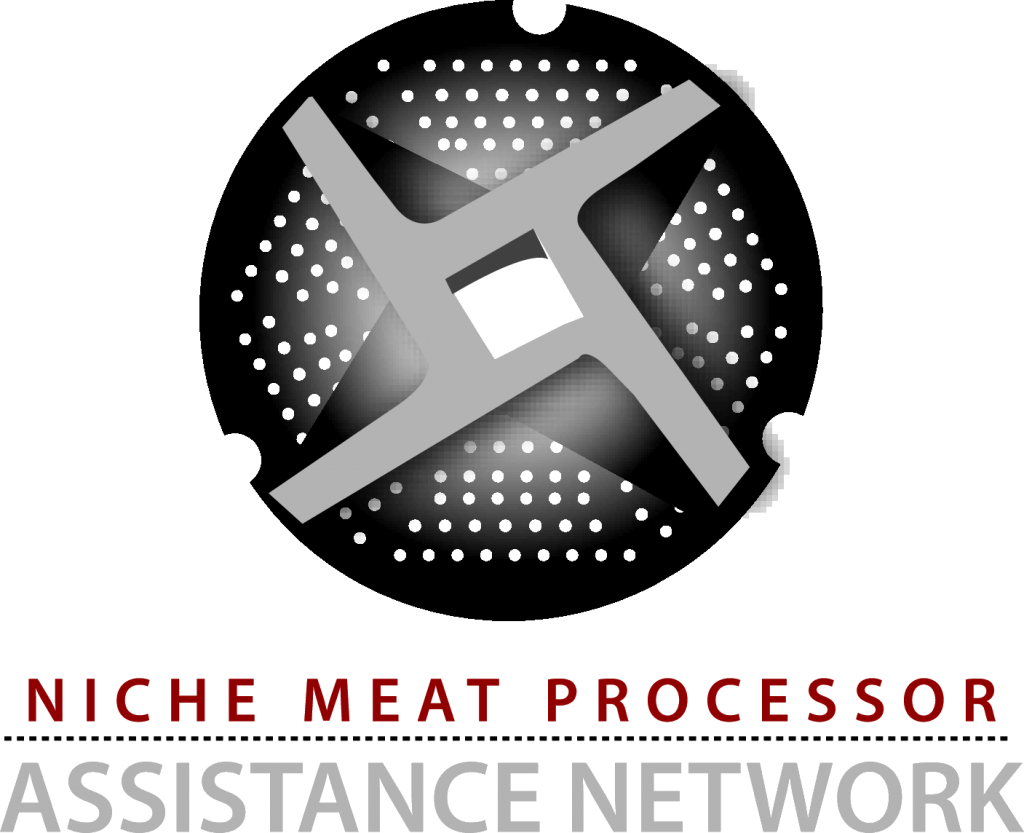What’s Here?
Every business needs a plan, and a good model can help you write yours. In this set of pages, you’ll find business plans for a small, USDA-inspected meat processing plant and linked meat marketing company, including a multi-part business and marketing analysis.
The plans describe a plant that provides fee-based meat processing services to livestock producers and manufactures processed meats for sale to wholesale or retail customers. It can harvest and process ~25 to 32 beef cattle per week and a similar amount of hogs and lambs/goats and would employ 7 to 11 full-time workers.
These plans were prepared in 2011 as part of a project, funded by USDA Rural Development, to examine meat processing and marketing options for the South Coast region of Oregon. Read more about the project below. The plans provided here are generic versions (without proprietary data) that can be adapted to other places and situations. They were written by Keith DeHaan and his staff at Food and Livestock Planning, Inc.
The analysis and model plans are useful for both content and structure.
Click on the links below to find summaries of the plans and downloadable versions.
- Business & Marketing Analysis
- Model Business Plan for Meat Processor
- Model Business Plan for Meat Marketing Company
South Coast Meat Processing and Marketing Project
Livestock producers in the South Coast region of Oregon who want to market their meats locally have to drive several hundred miles to the nearest inspected slaughter and processing facility. The Curry County Economic Development Department, seeing an opportunity for job creation in the region, partnered with producers and an established, local, custom-exempt processor, in Bandon, to explore how to create options closer to home.
USDA Rural Development provided funding and guidance for a study to (1) analyze the feasibility of a USDA inspected meat slaughter and processing facility for the Southern Oregon Coast and (2) develop a full scale business development and marketing plan for the local processor that could also serve as a replicable model for other projects.
Two options were explored: (1) the processor transitions to USDA inspection and also establishes a marketing company to market, sell, and distribute the finished product; (2) two separate companies are developed, one being the USDA inspected meat processor and the second being a producer-owned meat marketing company. These two businesses could either have a working relationship or ownership in each other.
The project began in August 2010. The business and marketing plans were delivered in May 2011. As of October 2011, the processor continues to work on the expansion proposal but has not yet moved ahead.
Agencies Involved
USDA-Rural Development, Oregon Department of Agriculture, and Curry County Economic Development Department
Why USDA-Rural Development Funded This Project
In conducting discussions and preliminary research on a USDA-inspected slaughter facility and meat processing plant, USDA-RD/Oregon and Oregon Department of Agriculture staff discovered numerous feasibility documents, meat studies, and research papers, full of various indicators and potential results. Yet few of these documents went further than research. This suggested the value of developing an actionable and replicable integrated marketing system and business model/plan for meat processing, that could be utilized anywhere in the country.
Equally important was the fact that an experienced entrepreneur was willing to take the information developed by this work and expand his processing business, provided the analysis indicated the idea was financially feasible given local conditions. The project seemed like a good opportunity to use relevant information to move the concept of a small scale USDA inspected meat processing facility from theory to reality.
What Was Learned from the Planning Process
Local demand for a USDA-inspected facility does not appear to be strong enough to warrant the significant investment and financial risk that would be required. Project cost was estimated at approximately $2.6 million to build and initially operate the processing facility (which includes $300,000 in working capital for year 1).
More detailed findings:
1. Ultimately, there was too little interest among ranchers to make their participation reliable, and a producer owned and operated marketing association seemed unlikely to materialize.
2. The vast majority of livestock producers did not want to be involved in marketing the final meat products. That meant the processor would have to do it, changing their costs drastically and potentially driving their cash flow projections further in the red.
3. Financing such a large project would be very challenging and likely require multiple sources. The processor’s equity commitment would be critical to obtaining loans, meaning substantial risk for the processor. It may be necessary to downsize the project’s scope and cost.
4. The idea of processing only “local” meat at the new plant should be reconsidered. While there does appear to be an adequate supply of local livestock, it does not seem reasonable to expect that (a) all local livestock will flow through a local supply chain to local markets or (b) that local ranchers dedicated to local markets can supply all the meat the processing plant may need to stay busy year round. The processor may need to source livestock from a wider region, both for local markets (which may require year-round supply) and for export out of the region.


